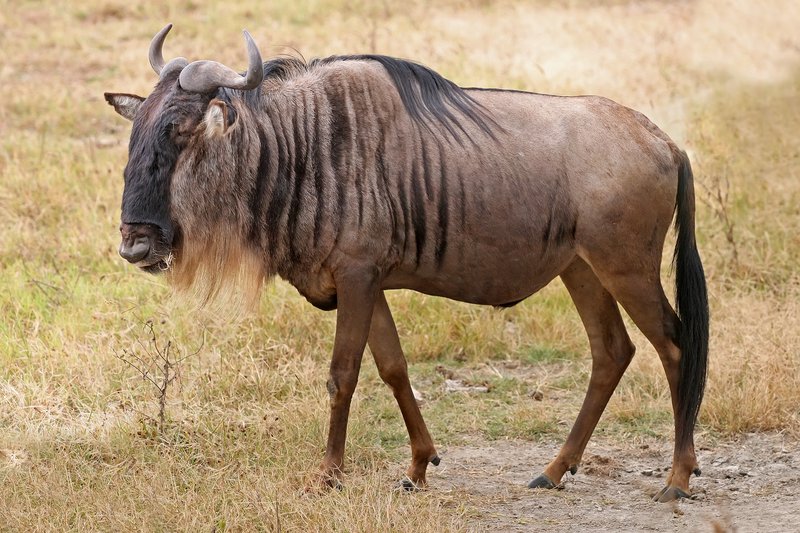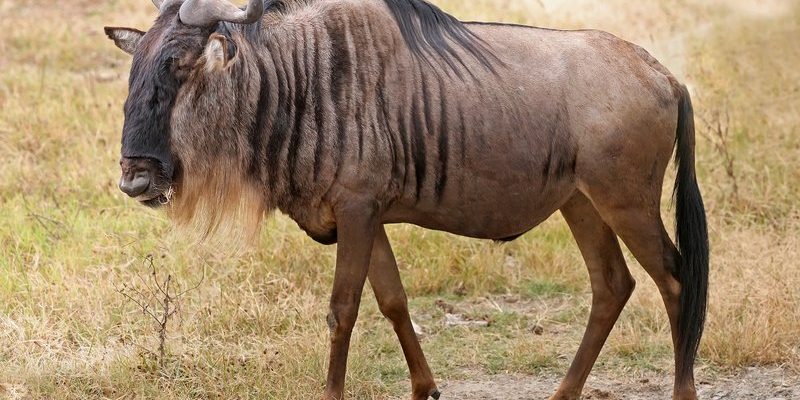
When you think about wildlife in Africa, elephants, lions, and giraffes often steal the spotlight. But wildebeests, usually in the background, deserve some attention too. You might be surprised to learn that they can be more than just a pretty sight. Understanding their behavior is key to knowing if they can be dangerous to humans.
What Exactly Is a Wildebeest?
To understand whether wildebeests can be dangerous to humans, it helps to know what these animals are all about. Wildebeests, or gnus, belong to the antelope family and are split into two main species: the blue wildebeest and the black wildebeest. They have distinct horns and a shaggy mane that gives them a somewhat scruffy look, don’t you think?
These animals are social creatures, often seen in large herds. Their migratory patterns, driven by the search for food and water, can lead them to travel great distances. Picture thousands of these creatures moving together, their hooves pounding the earth—it’s quite the sight! However, their size and strength mean that they’re not to be taken lightly.
Wildebeest Behavior: Are They Aggressive?
You might wonder how aggressive wildebeests can be. Generally, they are not known for being particularly violent. However, like many wild animals, they can become aggressive if they feel threatened. Imagine a startled wildebeest facing a predator; it may kick or charge in self-defense.
Here’s the thing: wildebeests have a strong instinct to protect their young. If a human or another animal gets too close to a calf, the protective mother can become aggressive. They can weigh up to 600 pounds and charge at speeds of around 30 miles per hour, so you definitely wouldn’t want to find yourself in their path!
When Are Wildebeests Most Likely to Be Dangerous?
There are specific circumstances when wildebeests can pose a threat to humans. The **migratory season**, which usually occurs in the rainy months, can see large groups of wildebeests mixing with tourists and safari-goers.
During this time, they’re more likely to be startled by sudden movements, loud noises, or even vehicles. A surprised wildebeest may react unpredictably, leading to dangerous situations. Being cautious and observing from a safe distance is wise when encountering these animals during migration.
Wildebeests vs. Other African Wildlife
Comparing wildebeests to other animals in Africa helps put their potential danger into perspective. For example, lions and elephants have a much greater capacity for aggression and can pose a more significant threat to humans. Elephants, for instance, can become aggressive when protecting their young or when they feel cornered.
Wildebeests don’t typically seek out human confrontation, but their formidable size and strength cannot be ignored. So, while they might not be at the top of the list for dangerous wildlife, it’s essential to remain aware and respectful of their space.
What Happens If You Get Too Close?
If you find yourself too close to a wildebeest, it’s vital to remain calm. These animals can sense fear and agitation. Instead of running or panicking, try to slowly back away while keeping an eye on the animal.
In rare cases, a wildebeest might charge if it feels threatened. If you happen to be in a vehicle, stay inside and avoid making loud noises. They’re more likely to ignore you if you don’t provoke them. It’s all about reading the situation and knowing when to be cautious.
In summary, while wildebeests can be dangerous, they aren’t aggressive by nature. They act protectively when they feel threatened, especially around their young. Understanding their behaviors and respecting their space is key to enjoying these magnificent animals safely.
So, the next time you’re on a safari or reading about wildlife, remember that wildebeests, like many creatures of the wild, deserve a little respect. They’re part of a delicate ecosystem and play a significant role in their environment. Enjoy their beauty, but always keep a safe distance—just in case they decide to remind you that they’re not as docile as they may seem!

